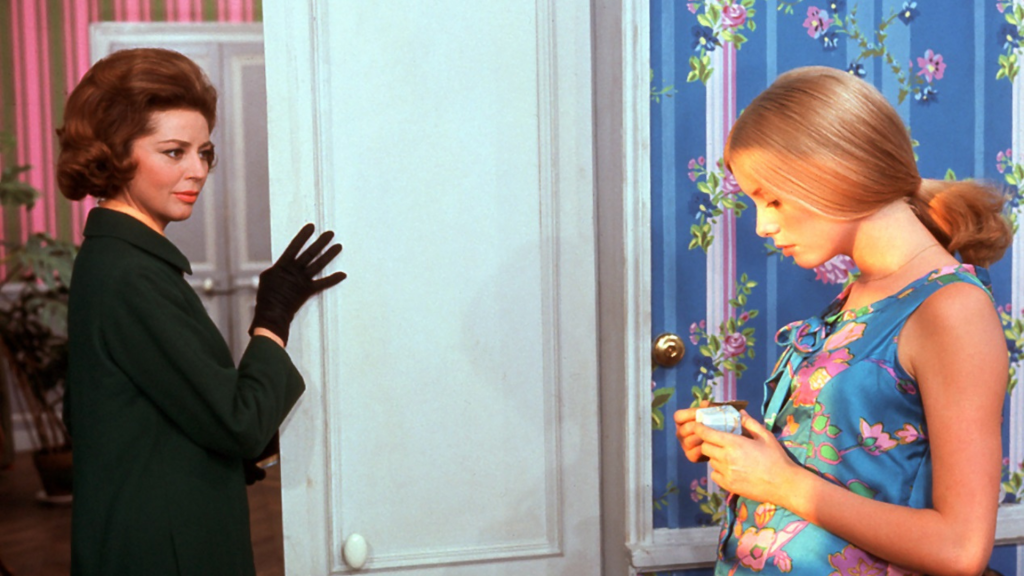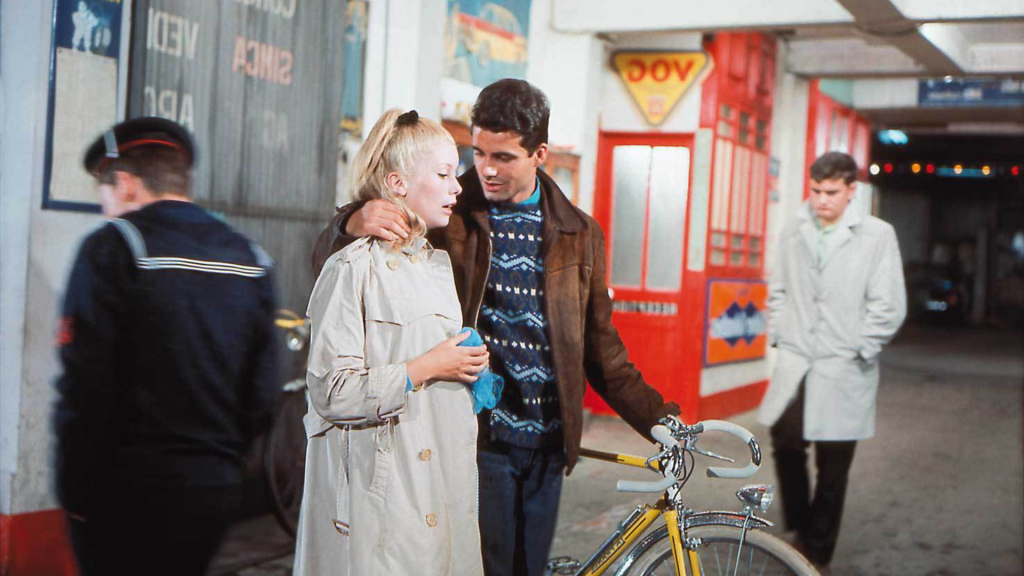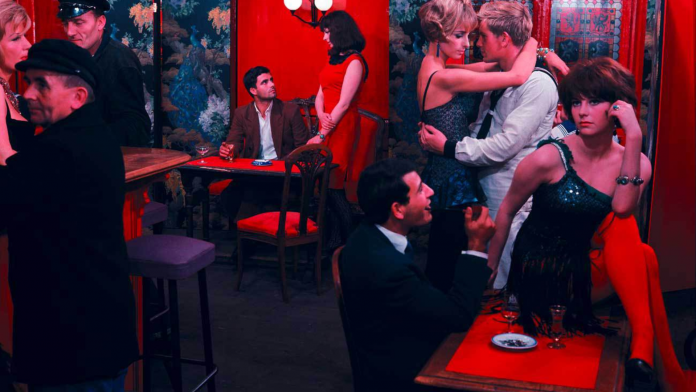Movie Monday: Film Recommendations By Our Contributors
Having grown up frequenting Cherbourg to visit family, it is surprising how long it has taken me to discover this film. Bearing a classical narrative, writer-director Jacques Demy’s innovative style is what shot Les Parapluies de Cherbourg (The Umbrellas of Cherbourg) to prominence in the 1960s, winning the Palme d’Or in 1964.
To this day, the town itself still celebrates the film with plaques, tours, and galleries. Since returning to Cherbourg after watching Parapluies, I’ve come to recognise the beauty and tranquility of life in a small sea town, which I must admit reduces one to a blinding state of maudlin.
The film follows Guy (Nino Castelnuovo), a mechanic with dreams of opening his own garage, and Geneviève (Catherine Deneuve), the daughter of a widowed shop-owner (the shop being ‘Les Parapluies de Cherbourg’, partly influencing the name of the film, along with the amusing observation that it always rains there). When we meet Guy and Genviève, they are already madly in love with each other and spend their free time doing what young people did at the time: constantly confessing their love for each other and going to dance halls. It isn’t until Guy gets a draft letter for his military service in Algeria that their relationship takes a tragic turn. What then unfolds in Guy’s absence from the town, and subsequent return years later, is a classic cautionary tale about the choice that must be made between love and ambition, and what can happen if the former is sacrificed.
The significance of the eponymous Norman sea town (and the reason for my strong connection to the film) comes from the fact that although the story is exclusively about the experiences of these two characters, Cherbourg itself plays a major role. It’s a haven where the lovers can be together, and their love is only threatened when one of them leaves. Parapluies is shot entirely on location in the town, but on top of that, Demy had many shopfronts repainted, new wallpaper put up, and brightly-dressed extras shipped in to create a vivid colour palette. Along with Michel Legrand’s powerful score, this turns the town into a fantastical, romantic dreamland for love, as well as loss, to thrive. Moreover, aside from objective beauty, the chromatic transformations in the film often serve the narrative. For example, the famously garish wallpaper in Genviève and her mother’s apartment is meticulously matched with the colour of their costumes depending on who holds the floor in their many conflicts, therefore adding a uniquely artistic level of subconscious, dramatic mediation that allows the story to flow and meander more easily.

It is clear that Demy was keen on reinventing cinema in his own way. At the time, French cinema as a whole was going through a complete make-over, with the Cahiers and Left Bank filmmakers moving away from the “tradition of quality” (as dubbed by François Truffaut) towards a more free-thinking approach. Demy was a member of the Left Bank Group, along with his future wife Agnès Varda, and one of the group’s principal ideas was increased realism. Therefore, shooting mostly on location for Parapluies (a trend that had started in Italy with the films of Roberto Rossellini) was a technique inspired by this sort of ‘new wave’ realism.
Many have also praised the realism of Les Parapluies de Cherbourg purely because of its fundamental, cautionary narrative in contrast to its innovative style. Roger Ebert argues that it’s a film about “the way things are”. Demy doesn’t go for the easy, traditional happy ending. He instead goes for a more bittersweet, grounded finale that leaves the audience with a lot to think about and unpack at dinner afterwards; yet another example of rejecting ‘tradition’ and embracing ‘new wave’ principles.
Where this deviates, and where Demy’s inspiration starts to appear amidst otherwise ‘traditional’ practices, is in the most famous aspect of the film; the singing. Every word of dialogue is sung, even the shortest of phrases being weaved into the music in some capacity. This allows the characters a whole other, dramatic dimension to relay their emotions through, with, as A.O. Scott puts it, “a minimum of artifice”. What I find interesting, with the battle between ‘traditional’ and ‘new wave,’ is that while this is a whole new way of unlocking the raw emotions of the characters, I wouldn’t call it realism. Arguably, such a grandiose elevation of emotion feels more akin to the melodrama of classic French cinema.

It is this sort of balance that is so appealing about Parapluies as a French classic; the teetering between ‘new wave’ innovation and beloved classical traditions. Another example of this is the camera work. Despite its dramatic musical elements, there is no dancing in the film. Therefore, along with cinematographer Jean Rabier, Demy and his crew make up for the lack of dancing by moving the camera in a way that compliments the music (the shot of them ‘walking’ toward Guy’s apartment, shot on a travelator, beautifully compliments the melancholic, legato number ‘I Will Wait for You’ and has famously been adopted by Spike Lee in many of his films). The shots are frequently very deep, allowing us glimpses down the cobbled streets of Cherbourg, while also emboldening the characters in the foreground.
The dynamic camera movements that act as a visual-rhythmic substitute for dancing (such as the famous point-of-view shot of the train pulling away) are likely to have been inspired by another, preceding French auteur named Max Ophüls, in films such as Madame de… (1953). Again, what we see is Demy’s combination of enthusiasm to push forward in cinematic innovation with mise en scène, while also paying homage to classical French artists (whom his contemporaries at Cahiers du Cinéma were quick to criticise).
Les Parapluies de Cherbourg is undoubtedly a masterpiece; the tragic story has been told before, but never has it been told so boldly and creatively (indeed, a lot of the film’s style and story massively influenced Damien Chazelle’s six (and a half) Oscar-winning La La Land (2016), among many others). As I mentioned at the start, this film is not an unknown gem; it has enjoyed classic status ever since its release. But, combined with my connection to the town of Cherbourg, it is a film that’ll hold a special place in my heart that not many other classics ever will.
Words by Oisín McGilloway
Support The Indiependent
We’re trying to raise £200 a month to help cover our operational costs. This includes our ‘Writer of the Month’ awards, where we recognise the amazing work produced by our contributor team. If you’ve enjoyed reading our site, we’d really appreciate it if you could donate to The Indiependent. Whether you can give £1 or £10, you’d be making a huge difference to our small team.
